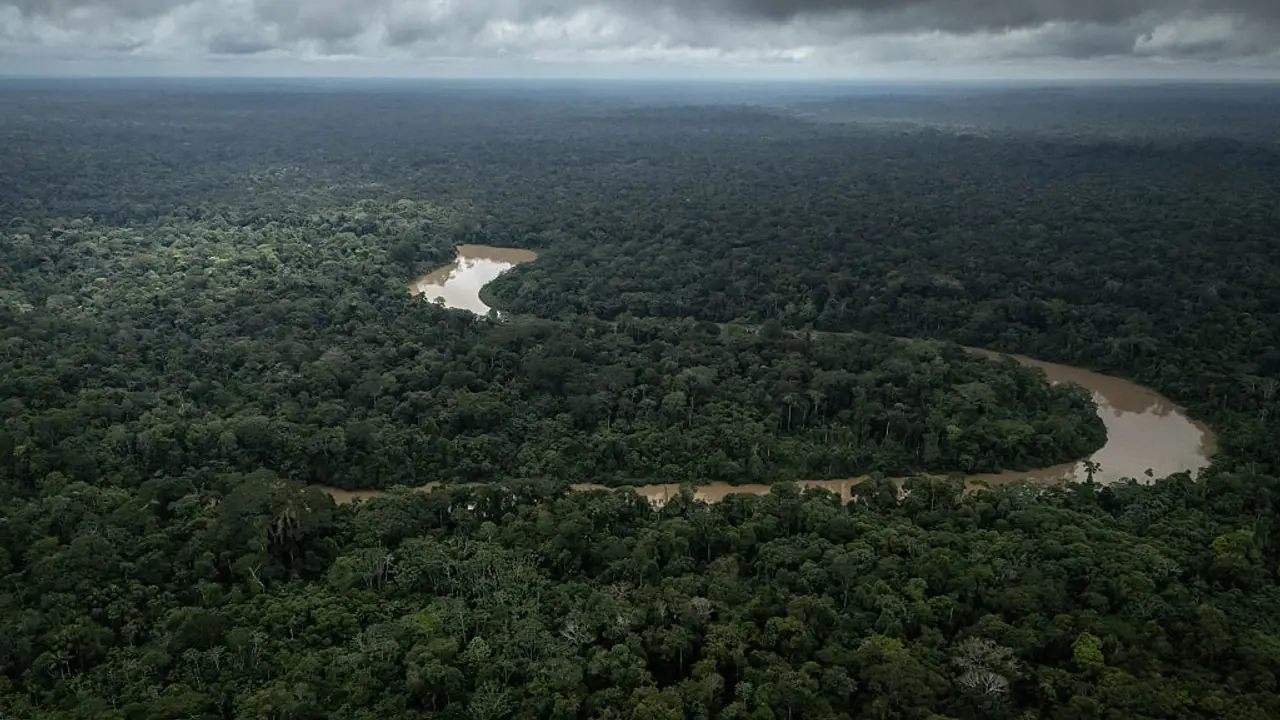Tropical trees are dying faster than ever, and it's not just heat or drought to blame. Scientists have uncovered a surprising culprit: ordinary thunderstorms.
For decades, drought, heatwaves, and deforestation have dominated discussions about what’s killing our rainforests. But now, scientists have uncovered a surprising culprit: Ordinary thunderstorms. These quick, fierce storms, powered by climate change, are toppling trees with intense winds and lightning, sometimes causing more damage than drought itself.

In a groundbreaking paper led by forest ecologist Evan Gora of the Cary Institute of Ecosystem Studies, researchers argue that these violent storms are potentially dominant force driving tree mortality in tropical forests. In fact, they could be responsible for up to 60% of all tree deaths in some regions — a figure that upends the traditional understanding of forest health.
“Tropical forests have massive effects on global climate. They’re like the lungs of the Earth, and we’re seeing trees in them dying at higher rates than in the past, and the composition of forests is changing, too,” Gora warned. “That could be really problematic for the future of not just tropical forests, but for the planet.”
While they don’t carry the scale or predictability of hurricanes or cyclones, these short-lived storms are growing more frequent and destructive, especially across the warming tropics. Despite their violent nature, their role in forest destruction has long gone unrecognized — largely due to the difficulty in detecting storm damage remotely or on foot.
Coauthor Vanessa Rubio, a forest ecologist from Gora’s lab, said, “Being in the forest during a tropical storm is unforgettable. As the storm quickly builds, the sky darkens, humidity changes drastically, and strong winds shake the trees. Then, thunder and lightning come. Leaves and branches fall to the ground, rain pours down, and your instinct is to get back to the field station as quickly as possible.”
Not just Drought, shocking force behind tropical tree deaths
When researchers reexamined past studies on carbon stocks in tropical forests, they were stunned to find that storm activity rivaled — and often surpassed — drought and temperature as key drivers of tree deaths.
“We were surprised to find that storms may be the largest single factor causing tree death in these forests, and they’re largely overlooked by research into carbon storage in the tropics,” Gora explained. “Our estimates suggest that storms are responsible for 30 to 60% of tree mortality in the past, and that number must be increasing as storm activity increases by 5 to 25% each decade.”
Incorporating storm activity into the largest plot-based study of tropical forest biomass, the team discovered that previous correlations between temperature spikes and carbon loss disappeared. In other words, without factoring in storms, many climate models might be drawing the wrong conclusions.
Storms and droughts, researchers note, often work in tandem — hitting regions like the southern Amazon with a one-two punch of water stress and storm destruction.
“During my studies on threats to tropical forests, my professors, our textbooks, and even overall climate policy never mentioned small, convective storms as a potential source of forest mortality,” said coauthor Ian McGregor. “I don’t remember seeing them in global climate models used to inform climate policy. Given our findings, however, it’s clear we need a more thorough understanding of these storms to have more accurate climate models, and thus more effective policy.”
To tackle the challenge of tracking these elusive storms, the team is pioneering Gigante — a bold initiative blending drone technology, lightning detection systems, and on-the-ground fieldwork to monitor large swaths of tropical forest. Their goal? To map out when, where, and why trees are dying — and which species are most at risk.
“If we make decisions about which species to plant or conserve based on an incorrect understanding of what’s actually killing these trees and which species are most vulnerable, those forests won’t reach their full potential,” Gora cautioned. “However, if we can build a more holistic picture of what’s driving forest change, we can be a lot more confident in guiding forest management practices for long-term sustainability."


